Overview
Chinese Name: 钟山; 紫金山
English Name: Purple Mountain; Zhongshan Mountain; Zhong Shan; Zijin Mountain
Location: Nanjing, Jiangsu
Type: Ancient culture and art
Rating Level: AAAAA (5A)
Website: http://www.zschina.org.cn/
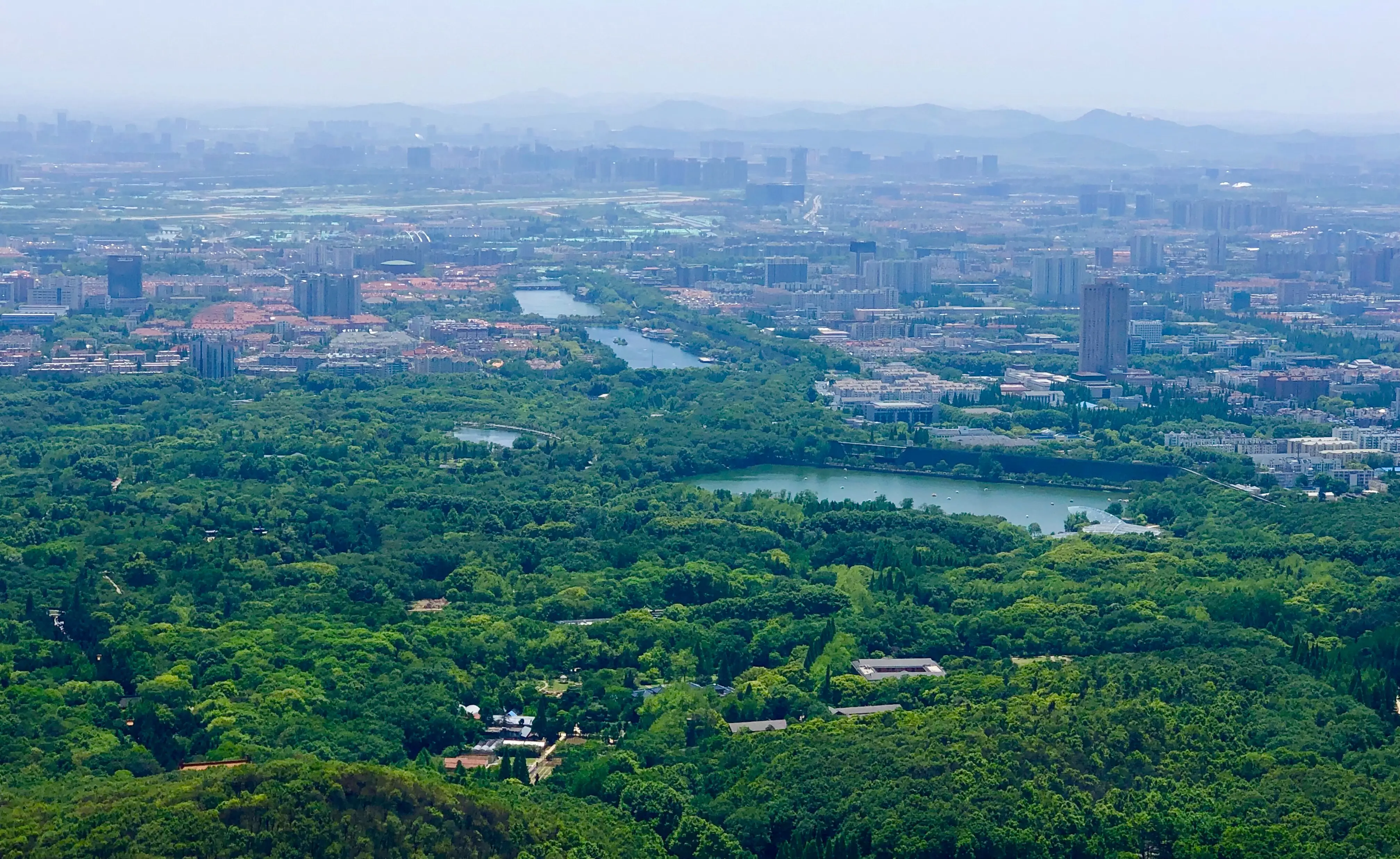
Brief Introduction
Purple Mountain Scenic Area is a famous scenic spot in China, one of the first batch of national scenic spots, one of the first batch of national 5A scenic spots, a national forest park, a national civilized scenic spot, and one of the top 40 tourist attractions in China.
Zhongshan Scenic Area is generally composed of Sun Yat-sen Mausoleum Scenic Area 中山陵, Ming Xiao Mausoleum Scenic Area 明孝陵, Linggu Scenic Area 灵谷景区, Meiling Palace 美灵宫, Zijin Mountain Peak Park (Toutuo Mountain 头陀山) and other scenic spots.
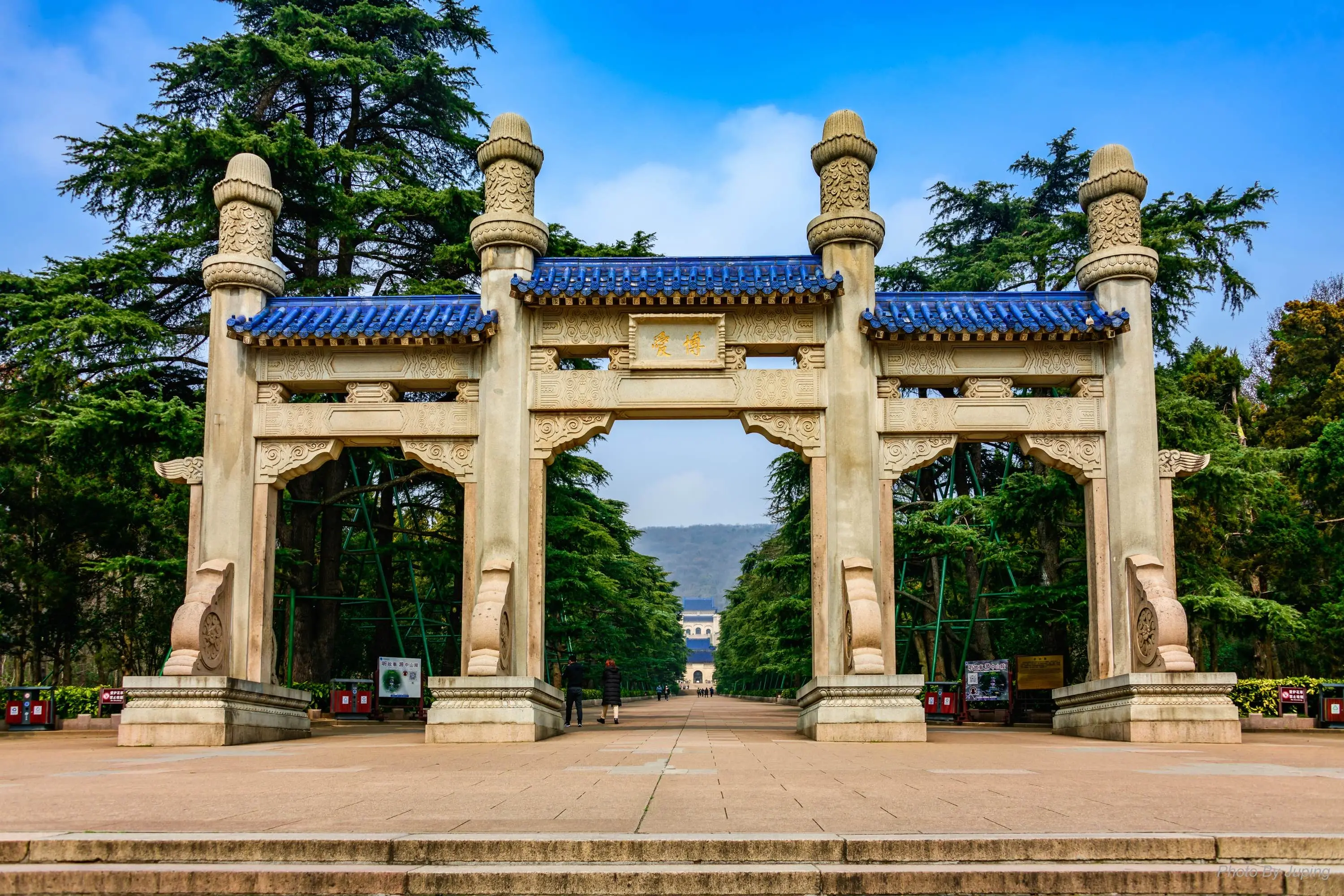
Purple Mountain is centered on Zhongshan Cemetery, supported by the Ming Xiaoling Mausoleum and Linggu Temple. The three core scenic spots, Zhongshan Mausoleum Scenic Area, Ming Xiaoling Mausoleum Scenic Area, and Linggu Scenic Area, are distributed with more than 200 scenic spots and 84 tourist attractions. Among them, there is 1 world cultural heritage site, 15 national key cultural relics protection sites, 31 cultural relics protection sites in Jiangsu Province, and 31 municipal cultural relics protection sites.
On November 8, 1982, Purple Mountain Scenic Area was announced by the State Council as one of the first batches of 44 national key scenic spots.
In 2007, Purple Mountain Scenic Area was rated as one of the first national AAAAA tourist attractions.
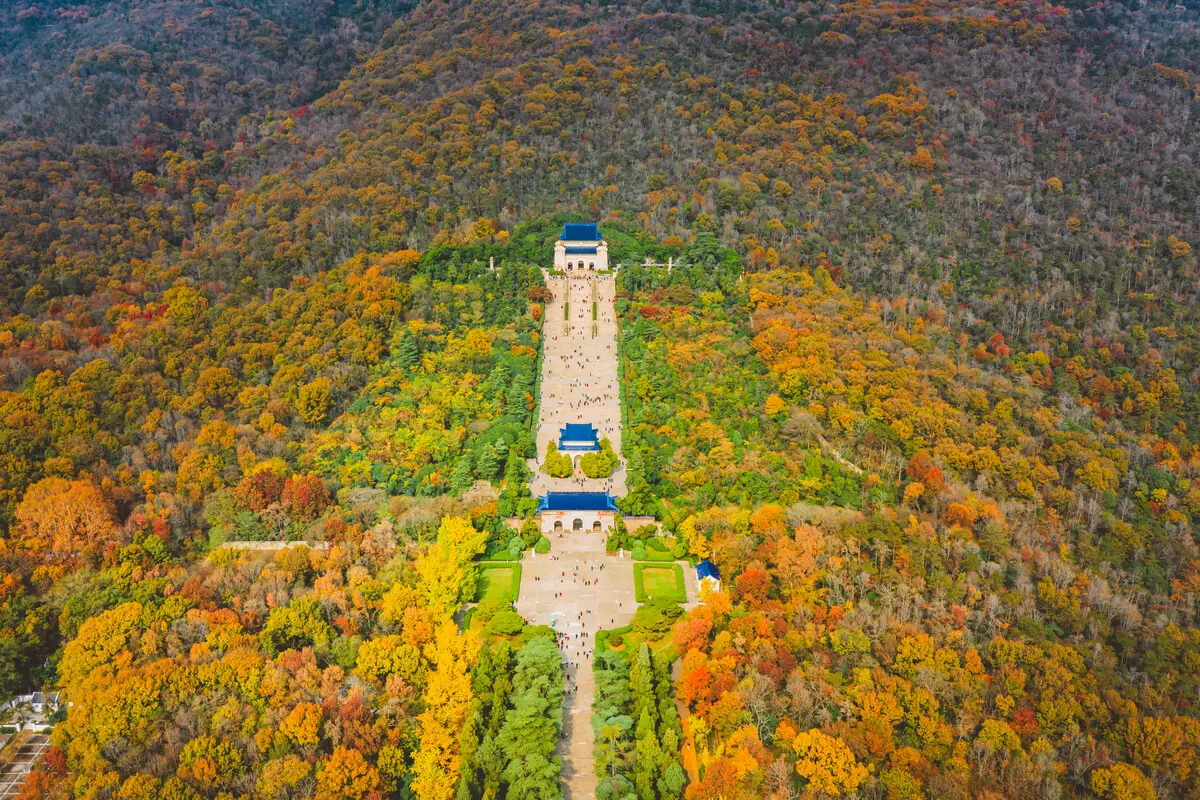
What are worth visiting and seeing?
Purple Mountain in history
Zhongshan (Zijin Mountain 紫金山) is a famous scenic spot in history. According to Dong Lina, senior engineer of Zhongshan Cemetery Administration Bureau, during the development of the Zijin Mountain forest, several organized afforestation activities in history have played a positive role in promoting the restoration of forest vegetation at different stages. These activities can be traced back to the Eastern Jin Dynasty 东晋.
The afforestation of Purple Mountain entered a prosperous period in the Ming Dynasty 明朝. At that time, the government advocated taking agriculture and mulberry as the foundation of the country, and vigorously advocated artificial afforestation. Because of the construction of the Ming Tomb, there were more than 100000 pine trees planted on the mountain.
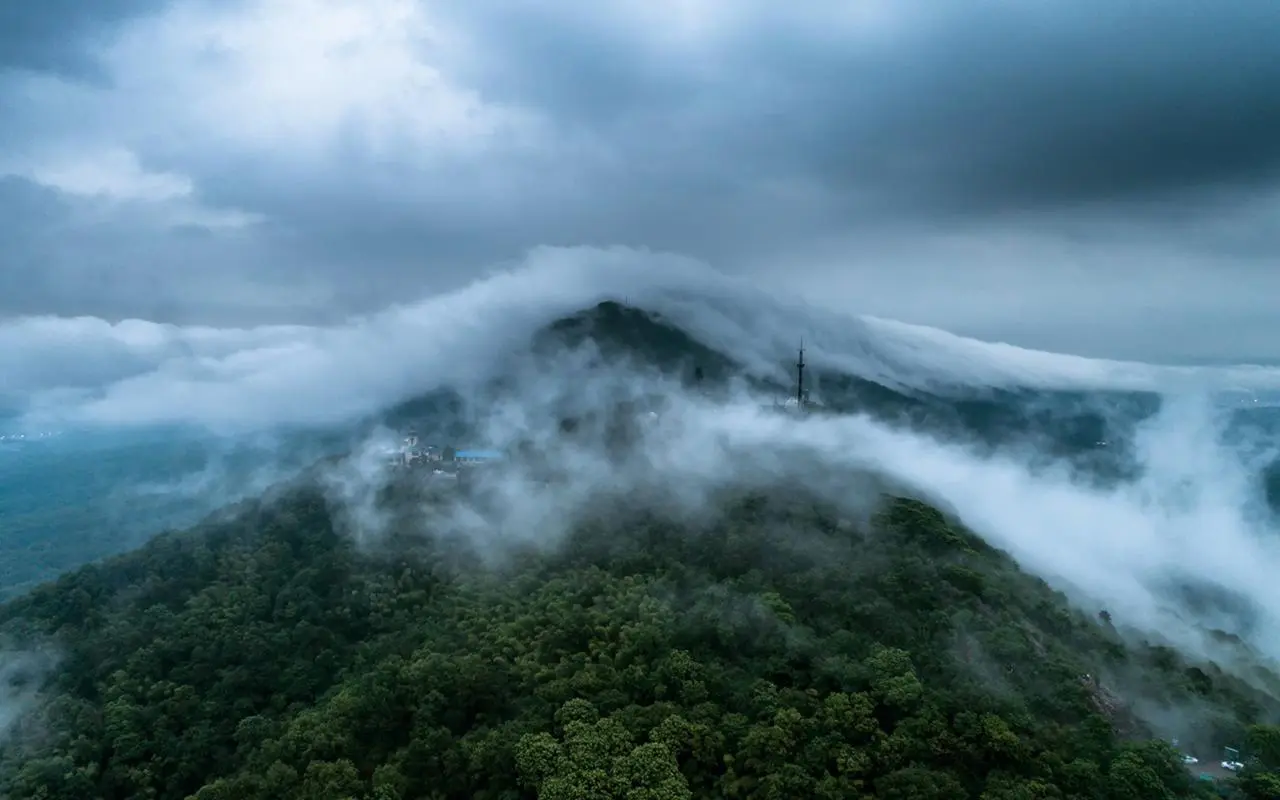
After the founding of the People’s Republic of China, the forest of Purple Mountain ushered in a real rebirth: by 1962, the whole mountain of Zijin Mountain had presented a lush forest landscape, with 4.4 million Masson pine, black pine, maple, Chinese fir, etc., and 70 hectares of Quercus were directly broadcast on the north slope; After 1976, great efforts were made to replant and reforestation the forest, and by 1982, more than 3 million tree species had been planted.
Today, Zhongshan has been called the “green lung” of Nanjing 南京. The forest has entered a stable succession stage. The zonal vegetation is gradually recovering and is developing towards a zonal forest ecosystem with a stable stand structure and beautiful forest landscape.
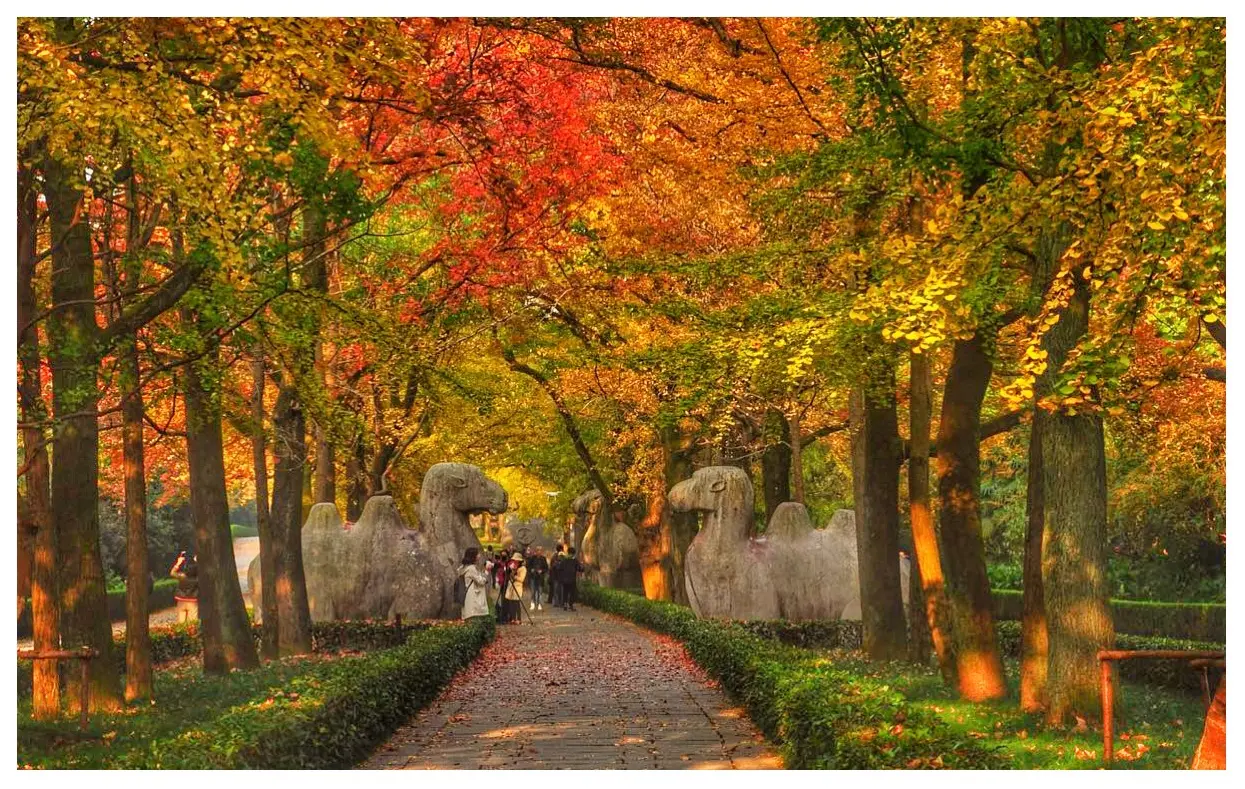
Attractions
Sun Yat-sen Mausoleum is located at the south foot of Zhongmao Peak 中茅峰 in Purple Mountain. It is the tomb of Dr. Sun Yat sen, the great pioneer of the democratic revolution. It was started in the spring of 1926 and completed in the summer of 1929.
Zhongshan Mausoleum covers an area of 2000 mu. It is built close to the mountain, with Pingchuan in front and Qingzhang in the back. It is magnificent, and its plane is in the shape of a “freedom bell”. The mausoleum building is axially symmetric, with a horizontal distance of 700 meters from the memorial archway, tomb path, tomb gate, and tablet pavilion to the sacrificial hall and tomb chamber, and a height difference of 70 meters.
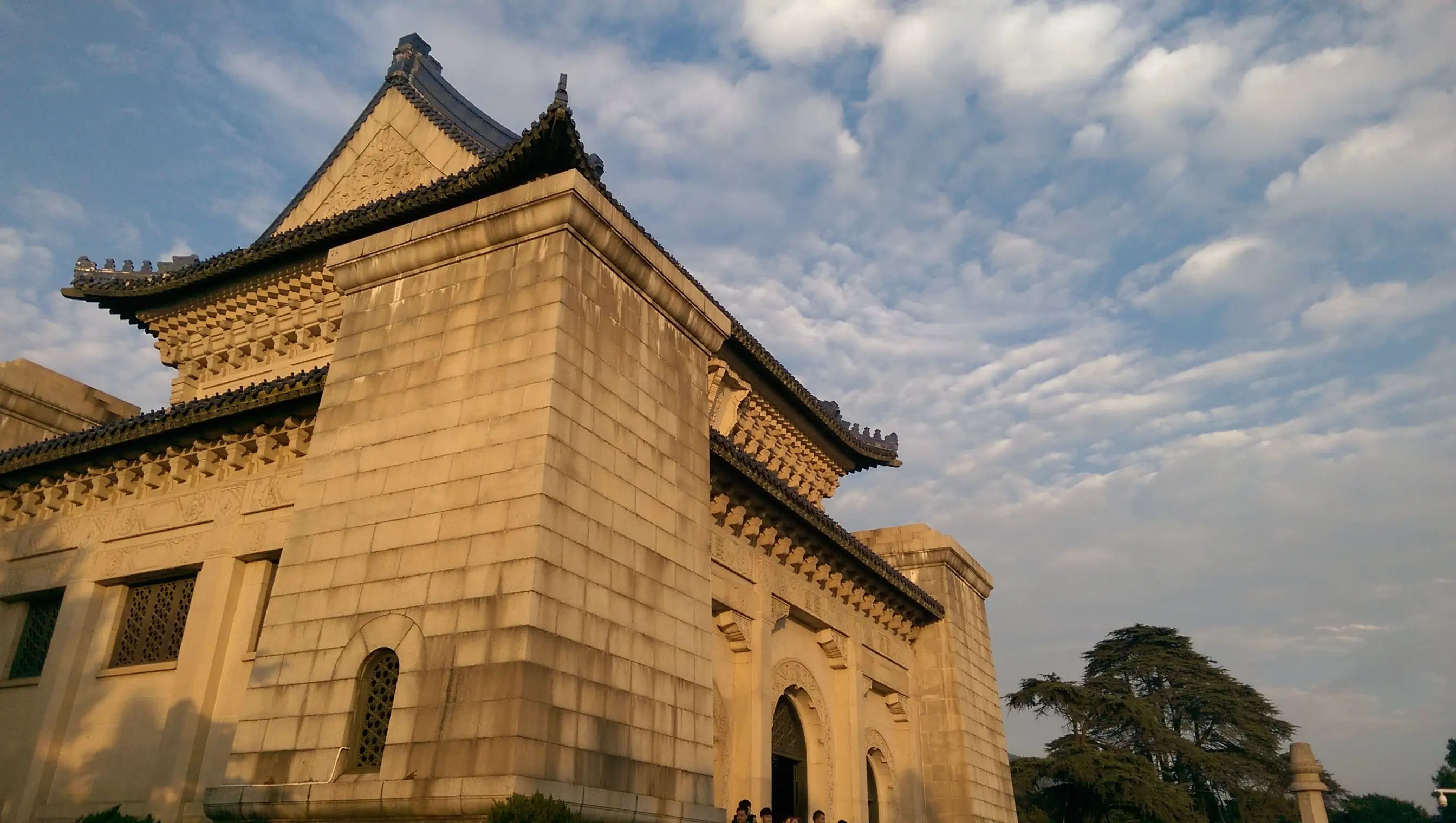
There are 10 392 stone steps and platforms, all of which are constructed of white granite and reinforced cement, and covered with blue glass tiles. Zhongshan Mausoleum has been listed as one of the first batches of key cultural relics protection units in China, and has been included in the list of “the first batch of China’s 20th-century architectural heritage”. It is known as “the first mausoleum in the history of modern Chinese architecture”.
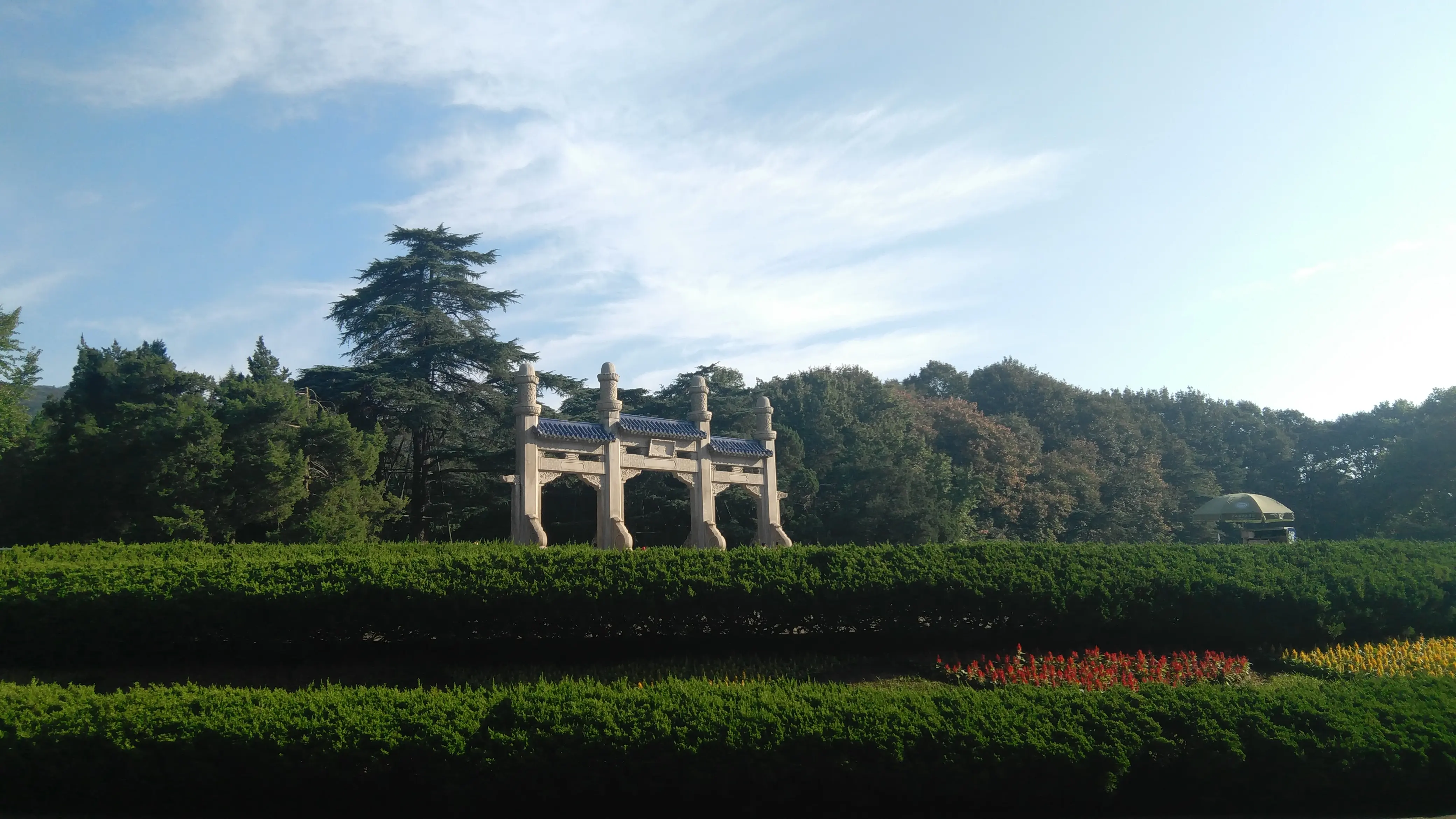
Located in the southeast of Zhongshan Mausoleum Boai Square, the Music Platform 音乐台 was built from 1932 to 1933 and covers an area of 4200 square meters. The plane of the music stage is a semicircle, and a stage is built at the center of the circle. An arc wall is built on the back of the platform to collect sound waves, and a dragon pattern is carved on the top of the wall.
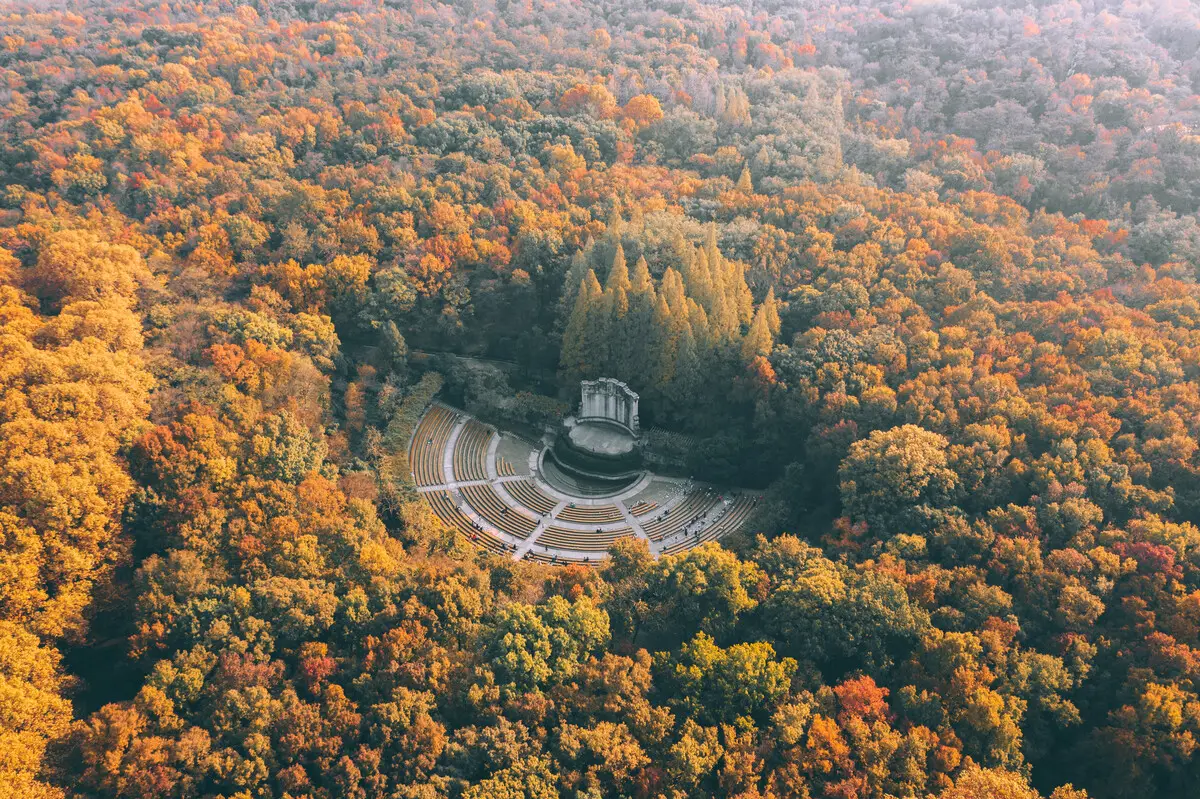
There are three corrugated ladders at the front edge of the platform. A crescent-shaped water lily pond is close to the front of the stage. There is a spring at the bottom of the pond. The water is clear and never dries up. In front of the pool, the slope shall be adjusted to a semicircular basin-shaped lawn with a radius of 50 meters, and the radial straight path and semicircular loop path shall be divided into 12 small fan-shaped lawns. The whole beautiful building is in harmony with the surrounding environment and is one of the important memorial buildings of Zhongshan Mausoleum.
Liuhui Pavilion 流徽榭 is located on the south bank of the road from Zhongshan Mausoleum to Linggu Scenic Area, also known as Shuixie 水榭. It is one of the memorial buildings of Zhongshan Mausoleum.
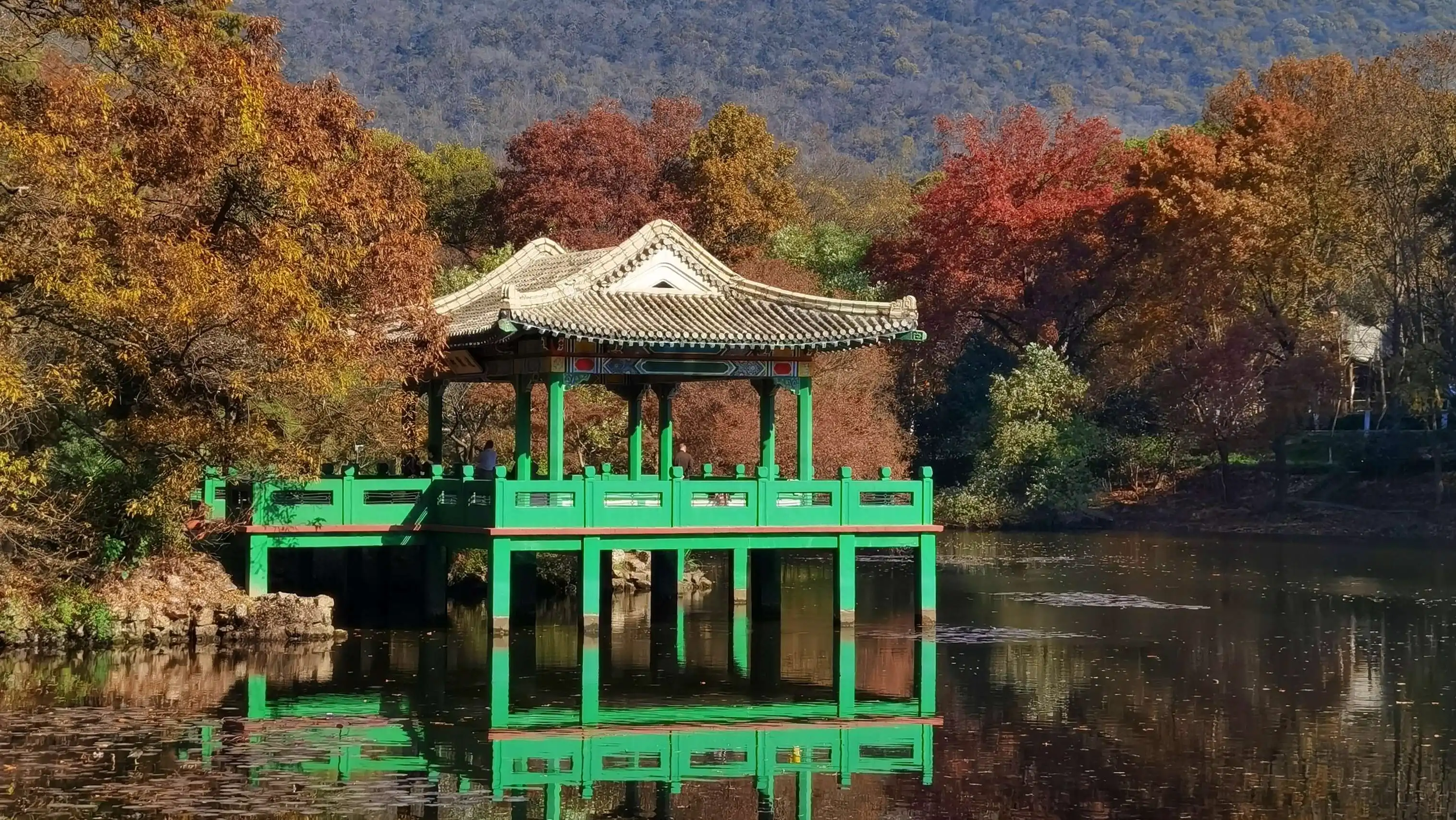
The Mausoleum of Dr. Sun Yat-Sen (航拍中山陵)
You might be interested in: